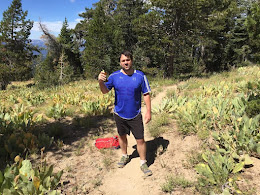Discover what consumers want to buy and give it to them with both barrels. Sell more, keep your job! How do marketers often translate these 'rules' into action on food? Our limbic brains love sugar, fat, salt. . . . So formulate products to deliver these. Perhaps add low-cost ingredients to boost profit margins. Then 'supersize' to sell more. . . . And advertise/promote to lock in 'heavy users.'While an evolutionary lens (and what anthropologists used to call among themselves the mismatch hypothesis) is useful to understand why we crave some foods that hurt us, and how that can be exploited and how we should eat other things, such a view is not the ultimate solution. And as with all things humans do, it can become just another way to reinforce pre-existing beliefs. This excellent article by an evolutionary biologist takes the paleo community to task for, among other things, a gaping blind spot in their dietary theory that many people including myself have been pointing out for a while. Essentially, it's this: if the way we ate for 500,000 years is so important to modern health (and everyone is sure it's somewhat important) then what about the 5 or 50 million years before that when we were obligate vegetarians? Why is only the romanticized caveman past a contributor? A killer quote is this:
It's common for people to talk about how we were "meant" to be, in areas ranging from diet to exercise to sex and family. Yet these notions are often flawed, making us unnecessarily wary of new foods and, in the long run, new ideas. I would not dream of denying the evolutionary heritage present in our bodies—and our minds. And it is clear that a life of sloth with a diet of junk food isn't doing us any favors. But to assume that we evolved until we reached a particular point and now are unlikely to change for the rest of history, or to view ourselves as relics hampered by a self-inflicted mismatch between our environment and our genes, is to miss out on some of the most exciting new developments in evolutionary biology. At the same time that we wistfully hold to our paleofantasy of a world where we were in sync with our environment, we are proud of ourselves for being so different from our apelike ancestors.Theories can be useful but the proof is always and only in the data, in proactive and longitudinal epidemiological studies.
Another excellent quote showing that yes, population genetics can shift quickly:
Humans are not the only species whose environment has changed dramatically over the last few hundred years, or even the last few decades. Some of the work my students and I have been doing on crickets found in the Hawaiian islands and in the rest of the Pacific shows that a completely new trait, a wing mutation that renders males silent, spread in just five years, fewer than 20 generations. It is the equivalent of humans' becoming involuntarily mute during the time between the publication of the Gutenberg Bible and On the Origin of Species. This and similar research on animals is shedding light on which traits are likely to evolve quickly and under what circumstances, because we can test our ideas in real time under controlled conditions.Sometimes the selection pressure comes from our own choices as humans. Tibetans split from their Han Chinese cousins on the low subtropical plains only 3,000 years ago, and yet Tibetans have already racked up 50 (!) mutations having to do with oxygen metabolism. And not surprisingly, some of the detoxification enzymes (the CYPs) differ dramatically between populations, based on foods they have adopted over the centuries; East Africans and Middle Easterners in particular have a cluster of mutations that make them better at metabolizing alkaloids not found in foods outside that part of the world. Is it really that difficult to see how this could apply to humans adopted starch-based agriculture in general? But again, the proof will be in the data.







